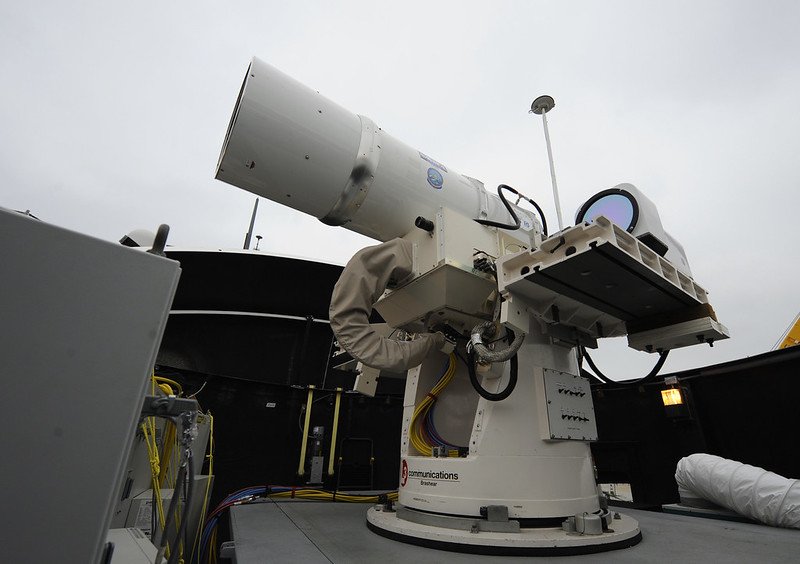Re: Naval Laser CIWS and Rail Gun Technology and Development News
"Once the stuff of science fiction, advanced technologies will help keep America's shores and allies safe."

"Once the stuff of science fiction, advanced technologies will help keep America's shores and allies safe."

Wall Street Journal said:I have a son getting ready to enter the Navy this month and people often ask me: "Are you OK with him entering such a dangerous profession?" For me the answer is easy: I am honored and humbled by his eagerness to defend his country and stand up for the democratic principles of the Constitution.
But as chief of Naval Research, I am also committed to ensuring that my son and his military colleagues have the best technology available to protect themselves and their nation from hostile states, extremists or other threats. Maritime strength is essential: 80% of the world's population lives near the sea; 90% of all world trade travels by ocean. From disaster relief in Haiti, Japan and the Philippines to autonomous underwater vehicles contributing to the search for the missing Malaysian airliner, Navy and Marine Corps technologies are ready and in demand.
Advanced technologies that were once the stuff of science fiction are also in the pipeline. This summer the Navy will deploy a laser cannon at sea for the first time and plans to test an electromagnetic railgun on a ship in 2016. The laser cannon delivers an invisible beam of energy with pinpoint accuracy that can take out an incoming plane, drone or boat. The electromagnetic railgun—using electricity rather than gunpowder—will defend against incoming missiles and opposing ships, and project power far inland by launching low-cost guided projectiles hundreds of miles at hypervelocity speeds over Mach 7.
Breakthrough technologies like these give commanders the option to deter, disable or destroy threats from greater distances. In addition, there is no limit to how many rounds a laser can fire, and at just $1 per shot, laser cannons will save the Pentagon (and taxpayers) many millions once fully deployed.
We're also developing Large Displacement Unmanned Underwater Vehicles, which will enable undersea operations as never before. It won't be long before unmanned, intelligent swarming vehicles from under, on and above the sea are able to overwhelm adversaries' vessels and protect U.S. ships.
You may have seen a YouTube video of Amazon's small, experimental drone delivering a book to a customer's doorstep. Now imagine a sailor or Marine pulling out a tablet and directing a full-size, unmanned helicopter to deliver 5,000 pounds of valuable supplies—whether lifesaving medical gear, food or ammunition—autonomously. That isn't fantasy. It was done successfully during test flights this year in Quantico, Va.
Advanced technology such as this requires extensive research in fundamental science and engineering. To that end, the Department of the Navy has the largest basic-research portfolio in the military. These investments are managed by the Office of Naval Research, overseeing thousands of academic grants and partnerships with small businesses and industry.
New military technologies require new skills in the age of cyberwarfare. To stay ahead, we have developed new network-security tools that defend against cyberattacks. The tools enable naval tactical cloud technology to rapidly assimilate big data and provide predictive, disruptive capabilities. In other words, we can detect a cyberthreat in the making and strike before being struck.
Past discoveries made at the Naval Research Laboratory, and other national laboratories partnered with industry and universities, have produced technologies crucial to today's world, including radar, global-positioning systems and cellular mobile devices. Current research is leading to more discoveries. A recent breakthrough: converting seawater into carbon dioxide and hydrogen, which could be used to make jet fuel.
I never want to see U.S. sailors or Marines in a fair fight. The potency and affordability of new technologies will help ensure that American military personnel and partner nations have such an advantage that our adversaries know they can never win.
